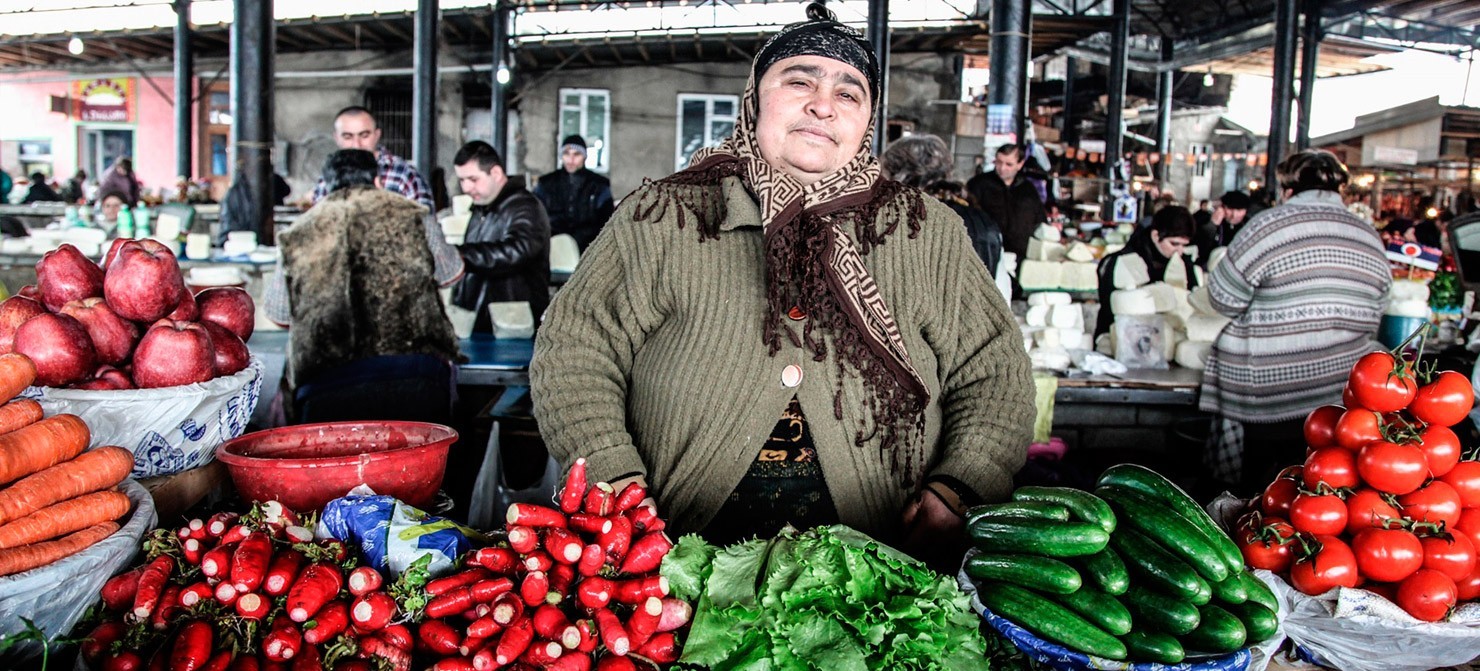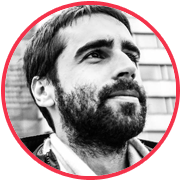
Evil Empire: Markets of the Former USSR in Gianluca Pardelli’s Project

Street markets in the former Soviet countries are a curious mix of different cultural features. They are neither European nor Asian. A Western traveler doesn’t think they are exotic, but at the same time, they are unusual. They have something characteristic of Eastern Europe before WWII, something of the Arab and Jewish souqs, and a bit of a Turkish bazaar.
Fish stand in Astrakhan and the pumpkin stall in Odessa both have history and memory of the past in them. Traveling around the markets I found the connection between the past and the present: the atmosphere and the smells, the way the seller and the buyer talk to each other. All of this refers back to Soviet times and even earlier than that.
Photographs of the markets are a part of a long and continuous project with an ironic title, Evil Empire, about the former Soviet Union, and they are an attempt to show the peculiar reality of post-Soviet society.
I have been shooting the street markets for four years. I spent an hour or more at each of them. I had almost zero trouble. The salespeople are very open and it is not a problem if you photograph them. In some places, such as Kazakhstan or Abkhazia, I had issues with the local authorities who did not want me to photograph the market. In Dagestan, people are afraid of the camera because of the complicated situation in the republic.
I started my Evil Empire project to tell the truth and the story of this collapsed empire, which about 300 million people call their motherland, through different pieces of the reality of Soviet heritage. I am not being nostalgic at all, but I want people in the West to understand what the USSR was, and what it means for a Soviet person to lose the world they grew up in. The memories of these people along with my pictures will tell you this bittersweet story.
{“img”: “/wp-content/uploads/2015/08/Markets_01.jpg”, “text”: “Makhachkala, Dagestan”}
{“img”: “/wp-content/uploads/2015/08/Markets_02.jpg”, “text”: “Chisinau, Moldova”}
{“img”: “/wp-content/uploads/2015/08/Markets_03.jpg”, “text”: “Ashgabat, Turkmenistan”}
{“img”: “/wp-content/uploads/2015/08/Markets_04.jpg”, “text”: “Yoshkar-Ola, Mari El Republic (Russia)”}
{“img”: “/wp-content/uploads/2015/08/Markets_05.jpg”, “text”: “Chisinau, Moldova”}
{“img”: “/wp-content/uploads/2015/08/Markets_06.jpg”, “text”: “Nakhchivan, Azerbaijan”}
{“img”: “/wp-content/uploads/2015/08/Markets_07.jpg”, “text”: “Kokand, Uzbekistan”}
{“img”: “/wp-content/uploads/2015/08/Markets_08.jpg”, “text”: “Astrakhan, Russia”}
{“img”: “/wp-content/uploads/2015/08/Markets_09.jpg”, “text”: “Tiraspol, Transnistria”}
{“img”: “/wp-content/uploads/2015/08/Markets_10.jpg”, “text”: “Astrakhan, Russia”}
{“img”: “/wp-content/uploads/2015/08/Markets_11.jpg”, “text”: “Kokand, Uzbekistan”}
{“img”: “/wp-content/uploads/2015/08/Markets_12.jpg”, “text”: “Rustavi, Georgia”}
{“img”: “/wp-content/uploads/2015/08/Markets_13.jpg”, “text”: “Odessa, Ukraine”}
{“img”: “/wp-content/uploads/2015/08/Markets_14.jpg”, “text”: “Baku, Azerbaijan”}






